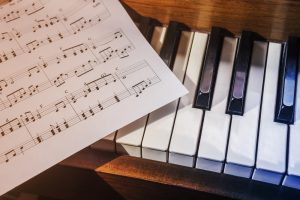Table of Contents
Come join us now, and enjoy playing your beloved music and browse through great scores of every level and styles!
Can’t find the songbook you’re looking for? Please, email us at: sheetmusiclibrarypdf@gmail.com We’d like to help you!
Sorabji: In the Hothouse (from Two Piano Pieces) sheet music, Noten, partitura, spartiti 楽譜

Best Sheet Music download from our Library.
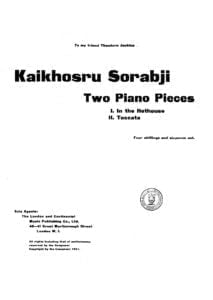
Please, subscribe to our Library.
If you are already a subscriber, please, check our NEW SCORES’ page every month for new sheet music. THANK YOU!
Browse in the Library:
Or browse in the categories menus & download the Library Catalog PDF:
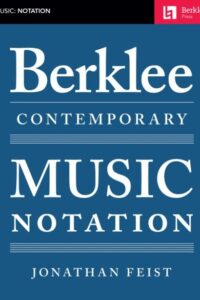
Who was Sorabji?
Kaikhosru Shapurji Sorabji: The Hermit of Modernist Maximalism
In the often-crowded pantheon of 20th-century composers, Kaikhosru Shapurji Sorabji (1892-1988) occupies a unique and enigmatic niche. A composer of staggering ambition, labyrinthine complexity, and self-imposed isolation, Sorabji crafted some of the most monumental, technically demanding, and stylistically idiosyncratic music ever conceived. His work, largely ignored during his lifetime and still challenging audiences today, represents a singular path through modernism – one defined by maximalism, intricate ornamentation, transcendental virtuosity, and a fierce, almost hermetic, independence.

Biography: A Self-Forged Identity
- Birth & Heritage: Born Leon Dudley Sorabji on August 14, 1892, in Chingford, Essex, England. His father was a Parsi engineer from India (thus the Persian-derived name Sorabji), and his mother was English-Spanish. This mixed heritage profoundly shaped his sense of identity, though he felt alienated from both cultures.
- The Name: Around 1914, he legally changed his name to Kaikhosru Shapurji Sorabji. “Kaikhosru” and “Shapurji” were Persian names chosen for their resonance and connection to ancient Persian history and Zoroastrianism, reflecting his deliberate construction of a unique persona.
- Musical Formation: Largely self-taught. He received some piano lessons in his youth but had no formal composition training. His musical education came through voracious listening, score study (especially Bach, Liszt, Busoni, Debussy, Ravel, Scriabin, Szymanowski, Medtner), and wide reading in literature, philosophy, and the occult.
- Early Career & Criticism: Worked as a music critic (under the pseudonym “S. Godfrey”) for outlets like The New Age and The New English Weekly from the 1910s to the 1930s. His critiques were famously acerbic, insightful, and often scathing, particularly targeting English musical provincialism and composers he deemed mediocre (which was most of them).
- The Recluse: Deeply disillusioned by the musical establishment and critical reception to his early performances (which were rare and often controversial), Sorabji gradually withdrew from public musical life starting in the late 1930s. After his mother’s death in 1940, he retreated almost completely to his secluded home “The Eye” in Corfe Castle, Dorset, where he lived with his companion, Reginald Norman Best, until his death. He forbade performances of his music for decades.
- The Ban Lifted: In 1976, pressured by a growing underground interest spearheaded by pianists like Yonty Solomon and Alistair Hinton (who later became his literary executor), Sorabji reluctantly lifted the ban on performances, provided he approved the performer.
- Death: Sorabji died on October 15, 1988, in Winfrith Newburgh, Dorset, leaving behind a colossal legacy of unpublished manuscripts.
Works: Monuments of Sound

Sorabji’s output is vast and overwhelmingly dominated by solo piano music, though he also composed orchestral works, chamber music, organ symphonies, and songs. His works are renowned for their extreme length, density, and technical difficulty, pushing the boundaries of playability.
- Key Masterpieces:
- Opus Clavicembalisticum (1930): His most famous (or infamous) work. A colossal 4+ hour piano epic in 12 movements (including fugues, passacaglias, toccatas, cadenzas), often considered one of the most challenging solo piano works ever written. A summit of contrapuntal complexity and virtuosic display.
- Symphonic Variations for Piano (1935-37): Another monumental work, exploring vast variation forms over an extended duration.
- Sequentia Cyclica super “Dies iræ” ex Missa pro Defunctis (1948-49): A massive cycle of 27 variations on the “Dies Irae” chant, demonstrating his intricate contrapuntal and transformative skills.
- 100 Transcendental Studies (1940-44): True to their name, these studies explore extreme technical and expressive demands far beyond those of Liszt or Chopin.
- Symphonies for Solo Piano: Several exist, including his Symphony No. 2 (“Jāmī”), blending orchestral textures and scope onto the piano.
- Gulistān – Nocturne for Piano (1940): A prime example of his lush, perfumed, and incredibly intricate “Persian”-inspired style.
- Concerti: He wrote several for solo piano and orchestra (e.g., Concerto per suonare da me solo e senza orchestra, per divertirsi), which are symphonic in scale and require superhuman virtuosity.
- Symphonies for Organ: Vast, complex works exploring the sonic possibilities of the instrument.
Analysis of Style: A Universe of Complexity
Sorabji’s style is instantly recognizable yet difficult to categorize. It synthesizes diverse elements into a unique and overwhelming whole:
- Maximalism: This is the defining characteristic. Sorabji embraced extremes:
- Length: Works lasting several hours are common.
- Density: Highly polyphonic textures, often with multiple independent melodic lines woven together in complex counterpoint (influenced by Bach, Busoni).
- Virtuosity: Demands transcendental technique – cascades of notes, complex polyrhythms, wide leaps, immense power, and extreme delicacy. He wrote as if the pianist had four hands.
- Ornamentation: Baroque-like ornamentation (trills, mordents, turns, grace notes) is ubiquitous, often layered and integral to the texture, creating shimmering, kaleidoscopic surfaces (influenced by Scriabin, Szymanowski, Middle Eastern/Persian music).
- Dynamic Range: From barely audible whispers to thunderous, percussive climaxes.
- Harmony: A complex fusion:
- Rooted in late-Romantic chromaticism (Scriabin, Szymanowski, early Schoenberg).
- Freely employed dissonance, clusters, and intricate chord structures.
- Often retained a sense of tonal centers or polarity, even amidst dense chromaticism (unlike strict atonality).
- Incorporated modal inflections, sometimes evoking Persian or Spanish flavors.
- Rhythm: Highly complex and fluid:
- Frequent use of polyrhythms (multiple simultaneous rhythms), cross-rhythms, and nested tuplets (triplets within quintuplets, etc.).
- Tempo often fluctuates wildly, requiring immense control.
- A sense of improvisatory freedom within highly structured forms.
- Form: Often large-scale, complex, and idiosyncratic:
- Favored variations (passacaglias, chaconnes), fugues, toccatas, and intricate multi-movement structures (like the Opus Clavicembalisticum).
- Forms were often expansive and cumulative, building through layered repetition and intensification rather than traditional development.
- Architecture was paramount, even in the densest textures.
- Influences (Assimilated, Not Imitated):
- Ferruccio Busoni: The most profound influence. Busoni’s ideas of “Young Classicism,” the transcendental potential of the piano, the fusion of Bachian counterpoint with modern harmony, and the concept of “Junge Klassizität” resonated deeply. Sorabji dedicated his Opus Clavicembalisticum to Busoni’s memory.
- Franz Liszt: Virtuosity, thematic transformation, large-scale forms, and the symphonic poem concept translated to piano.
- J.S. Bach: Contrapuntal mastery, structural rigor, and the use of forms like fugue and passacaglia.
- Alexander Scriabin: Mysticism, harmonic language, dense textures, and ecstatic climaxes.
- Karol Szymanowski: Sensuous harmony, intricate ornamentation (especially in the “Persian” inspired works like Métopes and Masques), and voluptuous textures.
- Debussy & Ravel: Color, texture, exoticism, and pianistic refinement.
- Mediterranean & Persian Cultures: While not authentically recreating these styles, he evoked their essence through ornamentation, melodic turns, and titles (Gulistān, Jāmī), reflecting his fascination with his Persian heritage and the wider Orient.
- Aesthetic: Sorabji’s music aimed for:
- Transcendence: Pushing beyond perceived limits of instrument, performer, and listener.
- Luxuriance & Opulence: A rich, sensual, almost decadent sound world.
- Intellectual Rigor: Underlying the sensual surface was meticulous structural planning.
- Individualism: A complete rejection of prevailing trends (serialism, neoclassicism, minimalism) in favor of his own uncompromising vision.
Legacy: From Obscurity to Cult Status
Sorabji’s legacy is complex and evolving:
- Decades of Neglect: His self-imposed exile and performance ban meant his music was virtually unknown outside a tiny circle for nearly 40 years. Manuscripts were inaccessible, unplayable, and unpublished.
- The Pioneers (1970s-): The lifting of the ban sparked interest. Pianists like Yonty Solomon, Michael Habermann, Geoffrey Douglas Madge (who made the first complete recording of Opus Clavicembalisticum in 1977), and later Marc-André Hamelin, Jonathan Powell, Fredrik Ullén, and Ronald Stevenson began the monumental task of learning, performing, and recording his works. This required immense dedication and technical prowess.
- Publication & Scholarship: The Sorabji Archive, established by Alistair Hinton (Sorabji’s literary executor), has been crucial in cataloging, editing, and facilitating the publication of scores (primarily by Dover Publications and The Sorabji Music Archive). Scholarly work is gradually increasing.
- Recordings Renaissance: The CD era and digital distribution (YouTube, streaming) have been transformative. Dedicated labels (Altarus, BIS, Toccata Classics, Piano Classics) have released numerous recordings, making this once-inaccessible music available globally. Complete cycles of the 100 Studies and other major works are underway.
- The Cult & The Challenge: Sorabji remains a “composer’s composer” and a cult figure. His music is not mainstream concert fare due to its extreme demands and duration. However, it commands deep respect and fascination among pianists, composers, and listeners drawn to its unique sound world and uncompromising vision. He is seen as the ultimate iconoclast, forging a path utterly independent of 20th-century musical fashions.
- Influence: His direct influence on other composers is hard to pinpoint due to his obscurity, but he stands as a powerful symbol of uncompromising artistic integrity and the exploration of extreme complexity and virtuosity. Composers interested in maximalism, intricate counterpoint, or pushing pianistic limits inevitably encounter his shadow.
- Copyright Controversy: The complex copyright status of his works (involving the Sorabji Archive and publishers) has sometimes been a point of friction within the community of performers and scholars seeking access.
Sorabji: The Solitary Giant
Kaikhosru Shapurji Sorabji was a true original. He inhabited a musical universe entirely of his own making, synthesizing diverse influences into a style characterized by unparalleled complexity, sensuous opulence, and transcendental ambition. His deliberate withdrawal from the world ensured decades of obscurity, but the dedication of pioneering performers and the power of recording technology have brought his extraordinary soundscapes to light. While his music remains challenging and demanding, it offers unparalleled rewards: a journey into a world of labyrinthine beauty, overwhelming power, and intellectual fascination. Sorabji stands as a testament to the power of an utterly individual artistic vision, uncompromising in its scope and ambition, a solitary giant whose monumental creations continue to challenge and inspire. He redefined the possible for the piano and left a legacy that continues to unfold as more performers dare to scale his musical Himalayas.
“In the Hothouse” is one of Sorabji’s most evocative and frequently performed works, serving as a perfect entry point into his dense, sensuous sound world. Here’s a detailed look at this fascinating piece:
Context: Two Piano Pieces (1918)
- Composed: 1918 (early in Sorabji’s career, age 26).
- Publication: First published in 1920, making it one of the earliest Sorabji works available in print.
- The Pair: “In the Hothouse” is paired with “Toccata” – a contrasting, hyper-virtuosic, and structurally complex piece showing his Busoni/Liszt influences. “In the Hothouse” offers the sensual, atmospheric counterpoint.
- Significance: Represents Sorabji’s early mastery of texture, harmony, and evocative atmosphere. It predates his gargantuan works but already displays his unique voice.
“In the Hothouse”: A Sensory Immersion
- Title & Imagery: The title instantly conjures an environment: humid, lush, teeming with exotic, overripe plant life, heavy perfumes, and stifling, enclosed heat. Sorabji translates this sensory overload into sound.
- Form & Structure: Relatively free and rhapsodic. It unfolds as a continuous, organic stream of consciousness rather than adhering to strict classical forms. Think of it as an elaborate, decadent arabesque.
- Style & Character:
- Extreme Sensuality: This is the defining feature. The music drips with lush, complex harmonies and suffocatingly rich textures.
- Harmony: Deeply chromatic, rooted in late Scriabin and early Szymanowski. Expect dense, constantly shifting chords: augmented harmonies, whole-tone inflections, unresolved dissonances creating tension, and sudden moments of surprising consonance like shafts of light piercing foliage. It avoids traditional tonality but gravitates around implied centers.
- Texture: Thick, layered, and constantly in motion. Tremolos, trills, rapid filigree (ornamental passages), and cascading arpeggios create a shimmering, humid haze. Melodies are often embedded within this dense undergrowth rather than standing clearly apart. The writing often requires the pianist to sustain multiple layers simultaneously.
- Rhythm: Fluid and flexible, often obscured by the sheer density of notes and ornamentation. Rubato (expressive tempo fluctuations) is essential. While less overtly complex polyrhythmically than his later works, the rhythmic flow feels organic and improvisatory.
- Dynamics & Articulation: Wide dynamic range, often shifting suddenly between extremes (e.g., thunderous climaxes collapsing into fragile whispers). Articulation varies from sharp staccatos to legatissimo passages that blur together. Pedaling is crucial for sustaining the harmonic haze and creating resonance.
- Ornamentation: Quintessential early Sorabji. Trills, mordents, turns, and grace notes are not mere decoration; they are the texture, creating constant flickering movement and contributing to the claustrophobic, teeming atmosphere. This foreshadows the intricate ornamentation dominating his mature style.
- Emotional Landscape: Evokes opulence, decadence, languor, mystery, stifling heat, hidden dangers, and overwhelming sensory stimulation. There’s a sense of beauty bordering on the grotesque due to its sheer intensity.
Influences Audible in “In the Hothouse”
- Scriabin (Primary): The harmonic language (mystic chords, unresolved dissonance, ecstatic climaxes), the sensual atmosphere, and the use of trills/tremolos are deeply indebted to Scriabin’s late sonatas and poems (e.g., Vers la flamme). Sorabji pushes Scriabin’s decadence further.
- Szymanowski: The opulent textures, perfumed harmonies, and “orientalist” exoticism (though abstracted here) strongly recall Szymanowski’s “Métopes” or “Masques,” which Sorabji admired deeply.
- Debussy: The focus on atmosphere, texture, and harmonic color (whole-tone scales, parallel chords) shows Debussy’s influence, though rendered with far greater density and intensity.
- Ravel: The virtuosic filigree and lush harmonies (think “Gaspard de la Nuit,” especially “Ondine” or “Le gibet”) are a touchstone, again amplified.
- Liszt: The rhapsodic freedom and dramatic gestures hint at Liszt, though filtered through a post-Scriabinesque lens.
Performance Challenges
- Texture & Balance: Maintaining clarity amidst the dense, rapidly shifting textures is paramount. The pianist must carefully voice chords and layers to prevent muddiness while sustaining the essential harmonic haze.
- Ornamentation as Texture: Executing the constant ornamentation smoothly and evenly, integrating it into the melodic and harmonic flow rather than treating it as mere decoration.
- Dynamic Control: Navigating the extreme dynamic contrasts and sudden shifts without sounding jarring. Creating a true pianissimo shimmer within complexity is incredibly difficult.
- Rubato & Phrasing: Applying expressive tempo fluctuations naturally while maintaining the overall structural coherence and forward momentum of the rhapsodic form.
- Pedaling: Using the pedal to create resonance and blend without causing harmonic blurring or loss of rhythmic definition. Requires exceptional sensitivity.
- Stamina & Focus: While shorter than his later works (typically 12-15 minutes), the piece demands intense concentration and physical control to sustain the atmosphere and navigate the technical intricacies.
Legacy & Significance of “In the Hothouse”
- Accessibility: It remains one of Sorabji’s most “accessible” works due to its evocative title, relatively shorter duration, and concentrated expression. It’s a frequent choice for pianists introducing audiences to Sorabji.
- Blueprint: It serves as a crucial blueprint for Sorabji’s mature style, showcasing his core preoccupations: sensuality, harmonic density, intricate ornamentation as texture, and atmospheric evocation, all present in embryonic form.
- Performance History: Despite Sorabji’s later ban, “In the Hothouse” (along with the Toccata) was one of the few pieces occasionally performed during his lifetime (e.g., by Sorabji himself and pianist Reginald Paul) and became a key work for the pioneering generation post-1976 (Yonty Solomon, Michael Habermann, Marc-André Hamelin, Jonathan Powell, Fredrik Ullén).
- Gateway Piece: It functions as a vital “gateway drug” into Sorabji’s world. Its success in conveying its intense atmosphere often encourages listeners to explore his more monumental, complex works.
- Standalone Masterpiece: Regardless of its role as an introduction, it stands as a perfectly formed and powerful piece of early modernist piano writing, a miniature tone poem of extraordinary evocative power.
“In the Hothouse” is a sun-drenched, overripe, and intoxicating immersion into Sorabji’s unique aesthetic. It captures the essence of his sensual maximalism in a concentrated dose, showcasing his debt to Scriabin and Szymanowski while asserting his own distinct voice. Its evocative power, technical brilliance, and relative brevity ensure its enduring place as one of his most beloved and frequently performed works, offering a compelling glimpse into the hothouse of Sorabji’s extraordinary musical imagination.
| Artist or Composer / Score name | Cover | List of Contents |
|---|---|---|
| Dick Hyman Harlem Stride Piano Solos |
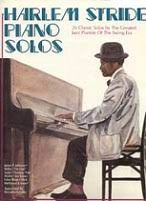 |
Dick Hyman Harlem Stride Piano Solos |
| Dick Hyman – All The Right Changes 100 More Tunes (For All instruments) |
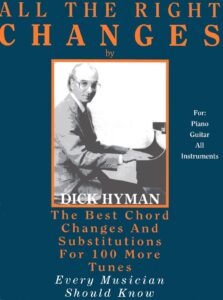 |
Dick Hyman – All The Right Changes 100 More Tunes (For All instruments) |
| Dick Hyman In the Styles of – The Great Jazz Pianists |
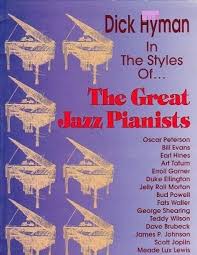 |
Dick Hyman In the Styles of – The Great Jazz Pianists (Contents) |
| Dick Hyman Piano Pro |
 |
Dick Hyman Piano Pro |
| Dictionary Of Music – by Christine Ammer (Book) |
 |
|
| Dido – Thank You | ||
| Dido – Whiteflag | ||
| Dido No Angel Piano Vocal Guitar Chords Piano Vocal Guitar |
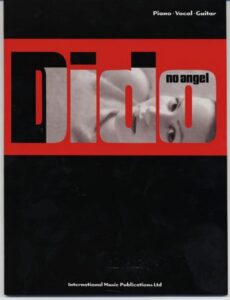 |
Dido No Angel Piano Vocal Guitar Chords Piano Vocal Guitar |
| Dierks Bentley – I Wanna Make You Close Your Eyes Sheet Music |
 |
|
| Digital sheet music creation and marketing easily done (Book) | Digital sheet music creation and marketing easily done (Book) | |
| Dillon Charm for piano |
 |
|
| Dillon Dragonfly for piano |
 |
|
| Dillon echo the angelus for solo piano |
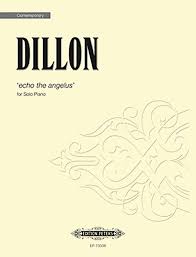 |
|
| Dillon THE BOOK OF ELEMENTS VOL. III |
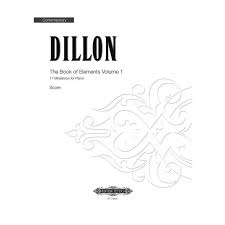 |
|
| Dimitri Tiomkin Webster, Paul Francis The Green Leaves of Summer Piano Vocal Vintage sheet music |
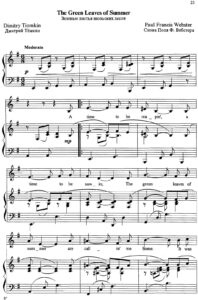 |
|
| Dimitri TiomkinThe Green Leaves Of Summer Guitar |
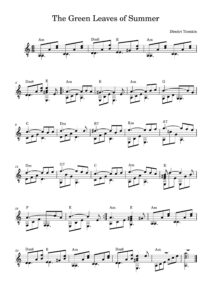 |
|
| Dimmi chi dorme accanto a me (Renato Zero) | ||
| Dimmu Borgir Sorgens Kammer |
 |
|
| Dino Kartsonakis – Quiet Time |
 |
Dino KArtsonakis – Quiet Time |
| Dio, come ti amo (Domenico Modugno) | ||
| Dionne Warwick – What To Do | ||
| Dionne Warwick The Best Of Songbook |
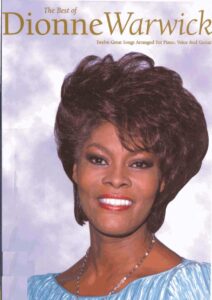 |
Dionne Warwick The Best Of Songbook |
| Dire Straits Alchemy Live |
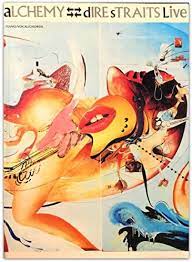 |
Dire Straits Alchemy Live |
| Dire Straits Private Investigations (Easy Piano Solo Arr.) Sheet Music |
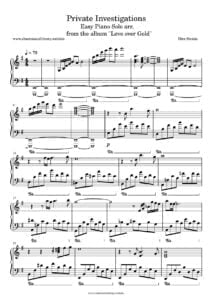 |
|
| Dire Straits Sultans Of Swing Piano Vocal Chords |
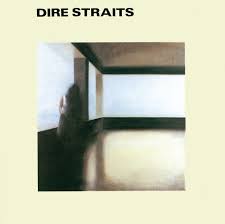 |
Dire Straits Sultans Of Swing Guitar TAB plus musical analysis |
| Dire Straits – Brothers In Arms Piano Vocal Chords |
 |
Dire Straits – Brothers In Arms Piano Vocal Chords |
| Dire Straits – Jam with (Book + MP3 audio tracks Play Along) Guitar with Tablature |
 |
Jam with dire straits |
| Dire Straits – Love Over Gold – Songbook (Piano, Guitar, Vocals) |
 |
Dire Straits – Love Over Gold – Songbook (Piano, Guitar, Vocals) |
| Dire Straits – Money For Nothing | Money For Nothing (Piano and lyrics) – Dire Straits | |
| Dire Straits – Money For Nothing (Piano and lyrics Songbook) |
 |
Money For Nothing (Piano Songbook) – Dire Straits |
| Dire Straits – Private Investigations (Easy Piano Solo Arr.) | Dire Straits – Private Investigations (Easy Piano Solo Arr.) | |
| Dire Straits – Private Investigations (Easy Piano Solo Arr.) (Musescore File).mscz | ||
| Dire Straits – Private Investigations (GUITAR TAB) – The Best Of Dire Straits and Mark Knopfler |
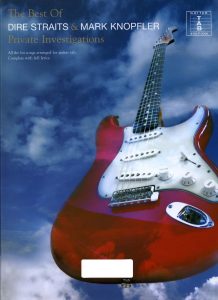 |
Dire Straits – Private Investigations (GUITAR TAB) – The Best Of Dire Straits and Mark Knopfler |
| Dire Straits – Private Investigations (Musescore File).mscz | ||
| Dire Straits – Romeo And Juliet GUITAR PLAY ALONG (with MP3 audio tracks) with Tablature |
 |
|
| Dire Straits – Sultans Of Swing |
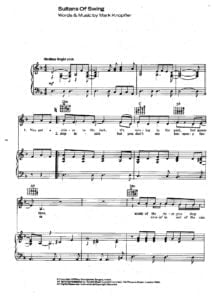 |
|
| Dire Straits – Sultans of Swing (Alchemy Live). Guitar Tablature Book |
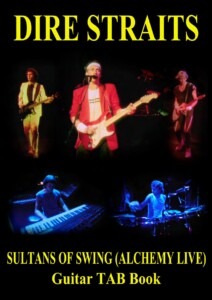 |
|
| Dire Straits – Telegraph Road | ||
| Dire Straits – Tunnel Of Love | Dire Straits-Tunnel Of Love | |
| Dire Straits – Walk Of Life | ||
| Dire Straits Brothers In Arms Songbook (Piano, guitar & vocal) |
 |
Dire Straits Brothers In Arms (Piano, guitar & vocal) contents — Dire Straits Brothers In Arms (Piano, guitar & vocal) |
| Dire Straits Dire Straits And Communique Songbooks |
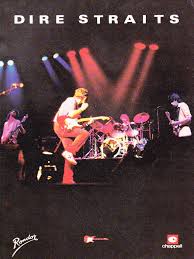 |
Dire Straits Dire Straits And Communique Songbooks |
| Dire Straits Money For Nothing (Musescore File).mscz | ||
| Dire Straits On Every Street Piano Vocal Guitar |
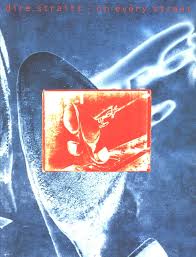 |
Dire Straits On Every Street Piano Vocal Guitar Contents |
| Dire Straits Sultans Of Swing Guitar TAB plus musical analysis | Dire Straits Sultans Of Swing Guitar TAB plus musical analysis | |
| Dirk Maassen – To The Sky |
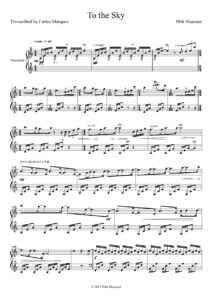 |
|
| Dirk Maassen Addio |
 |
|
| Dirk Maassen Danse |
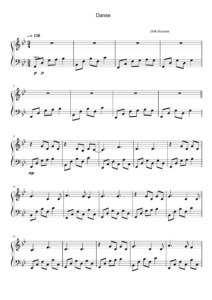 |
|
| Dirk Maassen Eclipse |
 |
|
| Dirk Maassen Gravity |
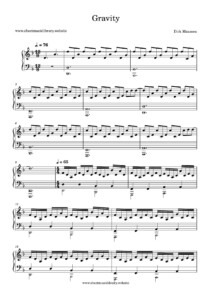 |
|
| Dirk Maassen Lamer |
 |
|
| Dirk Maassen To The Sky |
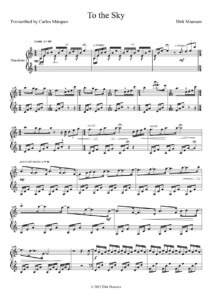 |
|
| Dirk Maassen Two Skies |
 |
|
| Dirk Maassen Viva |
 |
|
| Dirty Dancing Film Sheet Music Songbook |
 |
Dirty Dancing Film Sheet Music Songbook |
| Dirty Dancing Time Of My Life |
 |
dirty dancing sheet music |
| Disco Collection The – The Greatest Hits from The Disco Era |
 |
Disco Collection The – The Greatest Hits from The Disco Era |
| Disco Guitar Bible TABs |
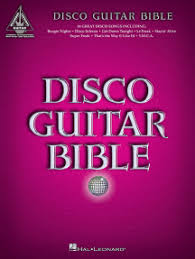 |
Disco Guitar Bible TABs |
| Disco The Best Disco Songs Ever Piano Vocal Chords |
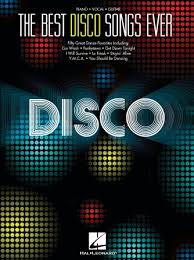 |
Disco The Best Disco Songs Ever Piano Vocal Chords |
| Discovering Classical Music Rachmaninoff (Book) by Ian Christians |
 |
|
| Discovering Classical Music Shostakovich (Book) by Ian Christians |
 |
|
| Discovery Jazz Collection – BARITONE SAX 15 selections for developing jazz ensembles |
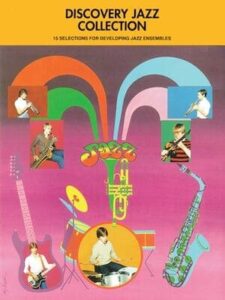 |
Discovery Jazz Collection – BARITONE SAX 15 selections for developing jazz ensembles |
| Discovery Jazz Collection – BASS 15 selections for developing jazz ensembles |
 |
Discovery Jazz Collection – BASS 15 selections for developing jazz ensembles |
| Discovery Jazz Collection – PIANO 15 selections for developing jazz ensembles |
 |
Discovery Jazz Collection – Piano 15 selections for developing jazz ensemble |
| Disney Beauty and the Beast – Alan Menken (Easy Piano Solo Arr. Sheet Music) |
 |
|
| Disney Medley – Misc Soundtrack Disney Piano Solo Medley | Disney Medley – Misc Soundtrack Disney Piano Solo Medley | |
| Disney My First Piano Songbook |
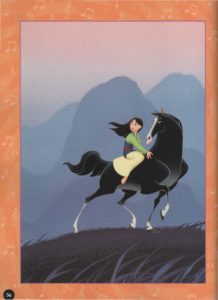 |
Disney My First Piano Songbook |
| Disney – 15 Songs For Fingerpicking Guitar with Tablature |
 |
Fingerpicking Disney |
| Disney – Aladdin – Arabian Nights (Piano sheet music) |
 |
|
| Disney – All Jazzed Up Disney 12 favorites reimagined with a Jazz flair |
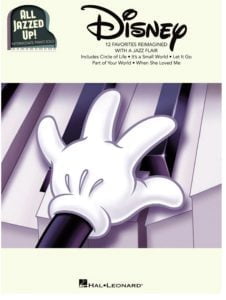 |
Disney – All Jazzed Up Disney 12 favorites reimagined with a Jazz flair |
| Disney – Beauty And The Beast – Alan Menken (Easy Piano Solo Arr. Sheet Music) (Musescore File).mscz | ||
| Disney – Beauty And The Beast (Piano Sheet Music) |
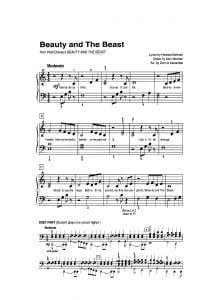 |
|
| Disney – Pixar Up (full sheet music book) easy piano solo by Michael Giacchino |
 |
Disney – Pixar Up (full sheet music book) easy piano solo by Michael Giacchino |
| Disney – Pixar Up Married Life (Main Theme) piano solo sheet music Michael Giacchino | Disney – Pixar Up Married Life (Main Theme) piano solo sheet music Michael Giacchino | |
| Disney – Pixar’s Up Main Theme Easy Piano Solo | Disney – Pixar’s Up Main Theme Easy Piano Solo | |
| Disney – Super Easy Songbook Sheet Music |
 |
Disney – Super Easy Songbook Sheet Music |
| Disney – Treasury Of Songs (Score Piano and vocal) |
 |
Disney treasury |
| Disney – You’re Going To Find This Hard To Believe sheet music | Disney – You’re Going To Find This Hard To Believe sheet music pdf | |
| Disney 101 Disney Songs For TENOR SAX |
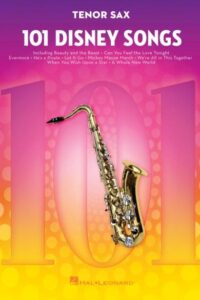 |
Disney 101 Disney Songs For TRUMPET |
| Disney 101 Disney Songs For TRUMPET |
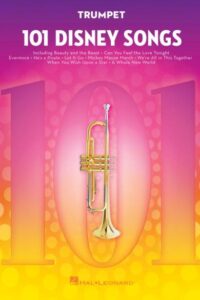 |
Disney 101 Disney Songs For ALTO SAX and TRUMPET |
| Disney A Wrinkle In Time Music From The Motion Picture Soundtrack Easy Piano by Ramin Djawadi |
 |
Disney A Wrinkle In Time Music From The Motion Picture Soundtrack Easy Piano by Ramin Djawadi |
| Disney Al Pianoforte – Easy Piano (40 Adattamenti Facili Per Pianoforte by F. Concina) |
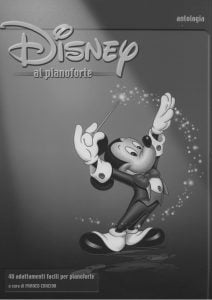 |
Disney Al Pianoforte – 40 Adattamenti Facili Per Piano |
| Disney Anastasia Once Upon A December Stephen Flaherty – Lynn Ahrens Piano Vocal | Disney Anastasia Once Upon A December Stephen Flaherty – Lynn Ahrens Piano Vocal | |
| Disney And The Winner Is A Collection Of Honored Disney Classic Songs Piano Vocal Guitar |
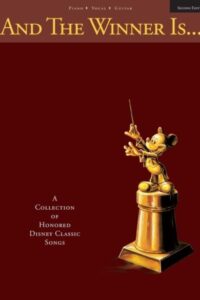 |
Disney And The Winner Is A Collection Of Honored Disney Classic Songs |
| Disney Beauty and the Beast |
 |
|
| Disney Beauty And The Beast Alan Menken Beauty And The Beast Music From The Disney Motion Picture Soundtrack Piano Solo |
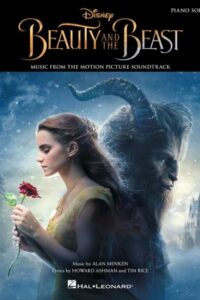 |
Disney Beauty And The Beast Alan Menken Beauty And The Beast Music From The Disney Motion Picture Soundtrack Piano Solo |
| Disney Beauty And The Beast Alan Menken Music From The Motion Picture Soundtrack Piano Vocal Guitar |
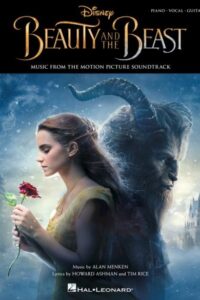 |
Disney Beauty And The Beast Alan Menken Music From The Motion Picture Soundtrack Piano Vocal Guitar |
| Disney Contemporary Songbook 50 songs 2nd Edition Piano Vocal Guitar |
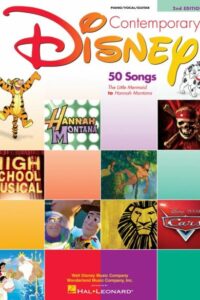 |
Disney Contemporary Songbook 50 songs 2nd Edition Piano Vocal Guitar |
| Disney Duets Piano 4 Hands |
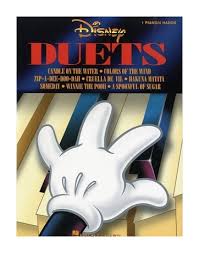 |
Disney Duets Piano 4 Hands |
| Disney Dumbo Music from the Motion Picture Soundtrack Piano Solo |
 |
Disney Dumbo Music from the Motion Picture Soundtrack Piano Solo |
| Disney Easy Piano 8 Great Hits for beginners |
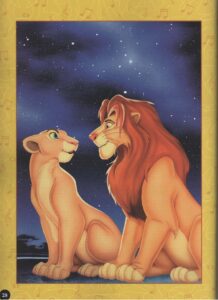 |
|
| Disney Encanto – Surface pressure Disney |
 |
|
| Disney Encanto – WE DON’T TALK ABOUT BRUNO Disney |
 |
|
| Disney Encanto – THE FAMILY MADRIGAL – Disney |
 |
|
| Disney Encanto Music From The Motion Picture Soundtrack Piano Vocal Guitar |
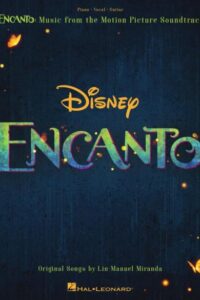 |
Disney Encanto Music From The Motion Picture Soundtrack Piano Vocal Guitar |
| Disney Fake Book (4th Edition) Piano Vocal Guitar and all C instruments |
 |
The Disney Fake Book 4th Edition Contents |
| Disney Fake Book (over 240 songs) |
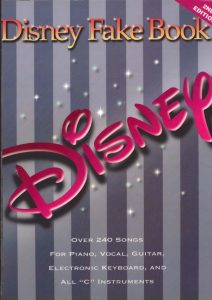 |
Disney Fake Book Over 240 Songs |
| Disney Fantasia 2000 (Book) |
 |
Disney Fantasia 2000 (Book) |
| Disney Favorites for Piano by J.S. Bastien |
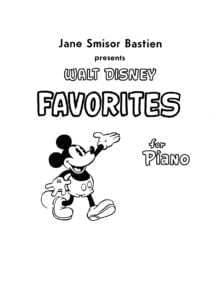 |
Disney Favorites for Piano by J.S. Bastien |
| Disney Favorites Jazz Piano Solos Series Volume 51 |
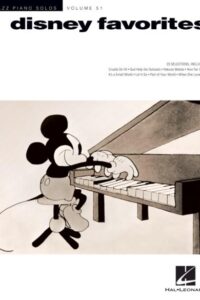 |
Disney Favorites Jazz Piano Solos Series Volume 51 |
| Disney Favorites Really easy piano |
 |
Disney 23 Disney Favorites Really easy piano |
| Disney Favorites The Phillip Keveren Series 10 Great Songs Big Note Piano |
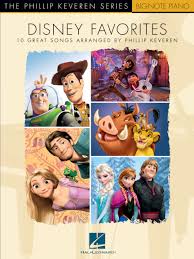 |
Disney Favorites The Phillip Keveren Series 10 Great Songs Big Note Piano |
| Disney Film Favorites Intermediate Piano Solos |
 |
Disney Film Favorites Intermediate Piano Solos |
| Disney Frozen 2 Piano Vocal Guitar Songbook Music From The Motion Picture Soundtrack Piano Vocal Guitar |
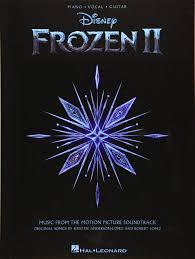 |
Disney Frozen 2 Piano Vocal Guitar Songbook Music From The Motion Picture Soundtrack Piano Vocal Guitar |
| Disney Frozen Let it go (easy piano ) |
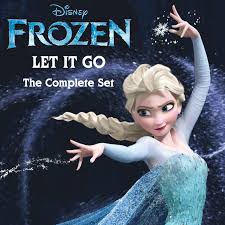 |
Let it go |
| Disney Giant Movie Hits (Songbook) 36 Contemporary Classics From The Little Mermaid To The Emperors New Groove |
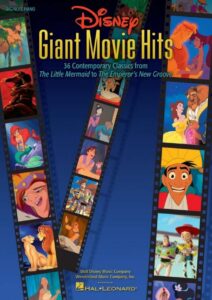 |
Disney Giant Movie Hits (Songbook) 36 Contemporary Classics From The Little Mermaid To The Emperors New Groove |
| Disney Goes Classical Piano Solo |
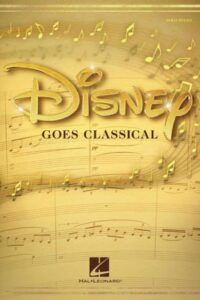 |
Disney Goes Classical Piano Solo |
| Disney Harry Gregson-Williams The Chronicles Of Narnia Piano Solo |
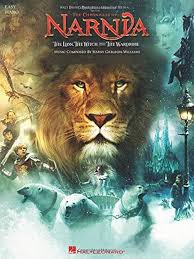 |
Disney Harry Gregson-Williams The Chronicles Of Narnia Piano Solo |
| Disney Hits Really Easy Piano 20 Disney Favourites |
 |
Disney Hits Really Easy Piano 20 Disney Favourites |
| Disney How Far I’ll Go Moana Piano & Vocals |
 |
|
| Disney Ingenue Songbook – sheet music |
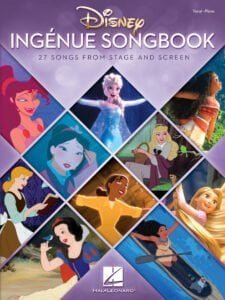 |
Disney Ingenue Songbook – sheet music |
| Disney Jazz Piano Solos Series Volume 16 |
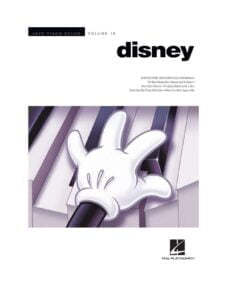 |
Disney Jazz Piano Solos Series Volume 16 |
| Disney Latest Hits Easy Piano 15 recent favorites |
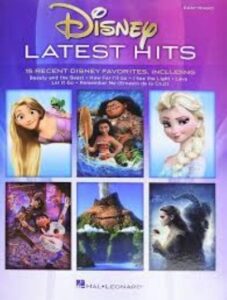 |
Disney Latest Hits Easy Piano 15 recent favorites |
| Disney Love Songs |
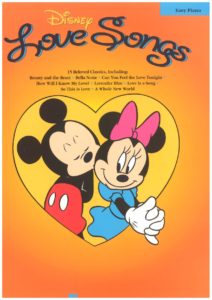 |
Disney Love Songs |
| Disney Love Songs 3rd Edition Piano Vocal Guitar Chords |
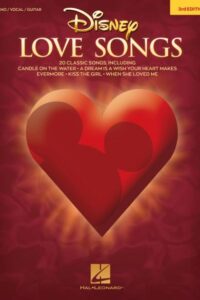 |
Disney Love Songs 3rd Edition Piano Vocal Guitar Chords |
| Disney Mary Poppins Feed The Birds Piano Solo arr. | Disney Mary Poppins Feed The Birds Piano Solo arr. | |
| Disney Mary Poppins Returns Music From The Motion Picture Soundtrack Piano Vocal Guitar |
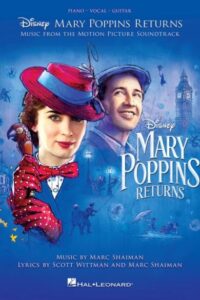 |
Disney Mary Poppins Returns Music From The Motion Picture Soundtrack Piano Vocal Guitar |
| Disney Mary Poppins Returns The Place Where Lost Things Go Marc Shaiman Scott Wittman Piano Vocal guitar |
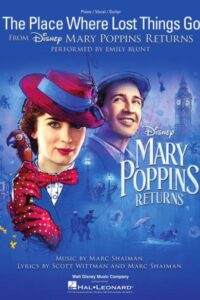 |
|
| Disney Mega-Hit Movies–Easy Piano (Songbook) |
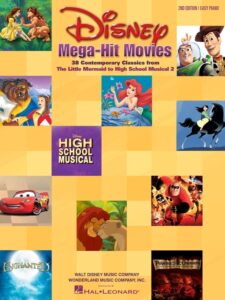 |
Disney Mega-Hit Movies–Easy Piano (Songbook) |
| Disney Mickey Mouse March From The Mickey Mouse Club Piano Solo (Easy And Intermediate Piano Solos) | Disney Mickey Mouse March From The Mickey Mouse Club Piano Solo (Easy And Intermediate Piano Solos) | |
| Disney Moana How Far I’ll Go From Moana (Alessia Cara version) |
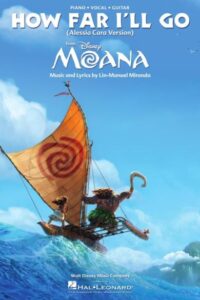 |
|
| Disney Muppets, The (Songbook) Music from the Disney Motion Picture Soundtrack Piano Vocal Guitar |
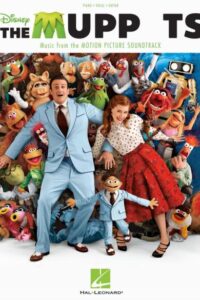 |
Disney Muppets, The (Songbook) Music from the Disney Motion Picture Soundtrack Piano Vocal Guitar |
| Disney music Collection |
 |
Disney music Collection |
| Disney My First Song Book Piano Easy |
 |
Disney My First Song Book Piano Easy |
| Disney On Broadway Songbook Piano Vocal Guitar Chords Tarzan Mary Popping Aida Lion King etc. |
 |
Disney On Broadway Songbook Piano Vocal Guitar Chords Tarzan Mary Popping Aida Lion King etc. |
| Disney Once Upon A Dream Easy Piano Solo with lyrics |
 |
|
| Disney Once Upon A Dream Voice from Disney Sleeping Beauty Piano Vocal |
 |
|
| Disney Peaceful Piano Solos Book 2 |
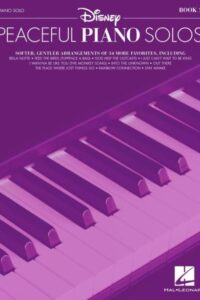 |
Disney Peaceful Piano Solos Book 2 |
| Disney Peaceful Piano Solos Songbook |
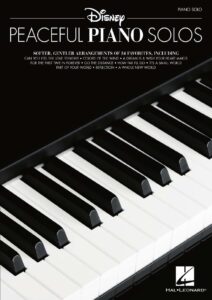 |
Disney Peaceful Piano Solos Songbook |
| Disney Piano Solos From Encanto Frozen II And Coco Nine Beautiful Intermediate Arr. By Mona Rejino |
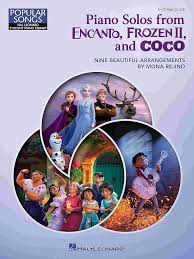 |
Disney Piano Solos From Encanto Frozen II And Coco Nine Beautiful Intermediate Arr. By Mona Rejino |
| Disney Pictures Intro (Easy Piano Solo) |
 |
|
| Disney Pixar For Piano 15 beloved favorites Easy Piano Solo |
 |
Disney Pixar For Piano 15 beloved favorites Easy Piano Solo |
| Disney Pixar Soul Music From And Inspired By The Motion Picture Piano Vocal Guitar Chords |
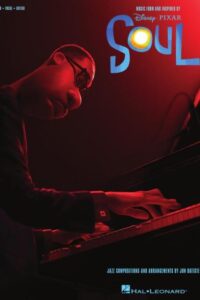 |
Disney Pixar Soul Music From And Inspired By The Motion Picture Piano Vocal Guitar Chords |
| Disney Pixar TOY STORY – Randy Newman – You’ve Got A Friend In Me |
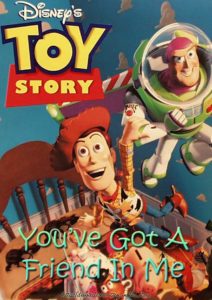 |
|
| Disney Pixar Toy Story 4 Songbook – Randy Newman |
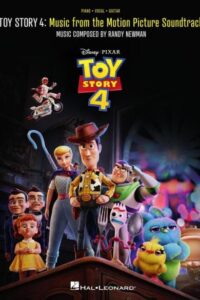 |
Disney Pixar Toy Story 4 Songbook – Randy Newman |
| Disney Pixar Toy Story Easy Piano Collection (Songbook) 8 Songs From The Popular Movies |
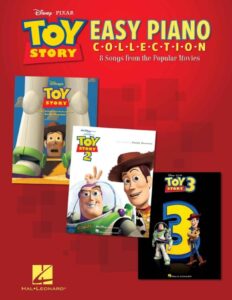 |
Toy Story Easy Piano Collection (Songbook) 8 Songs From The Popular Movies |
| Disney Pixar Toy Story Easy Piano Collection Updated Edition |
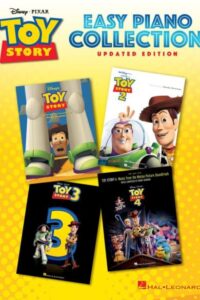 |
Disney Pixar Toy Story Easy Piano Collection Updated Edition |
| Disney Pixar’s Coco Easy Guitar Music from the Original Motion Picture Soundtrack |
 |
Disney Pixar’s Coco Easy Guitar Music from the Original Motion Picture Soundtrack |
| Disney Pixar’s Coco Music from the Original Motion Picture Soundtrack Piano Vocal Guitar Chords |
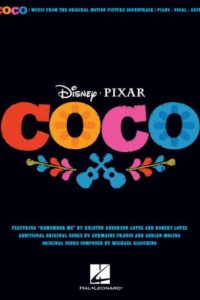 |
Disney Pixar’s Coco Music from the Original Motion Picture Soundtrack Piano Vocal Guitar Chords |
| Disney Pixar’s Up Theme MARRIED LIFE Piano Solo | Disney Pixar’s Up Theme MARRIED LIFE Piano Solo | |
| Disney Princess Collection – The Music of Hopes Dreams and Happy Endings |
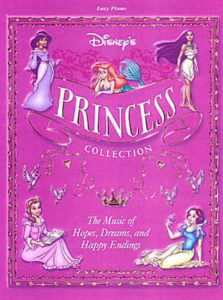 |
Disney Princess Collection – The Music of Hopes, Dreams and Happy Endings |
| Disney Solos For Clarinet (Sheet music book) |
 |
Disney Solos For Clarinet |
| Disney Songbook |
 |
 Disney Songbook, The {Book} solo piano Disney Songbook, The {Book} solo piano |
| Disney Songs For Classical Guitar (with Tablature) |
 |
Disney Songs For Classical Guitar |
| Disney Songs For Classical Piano |
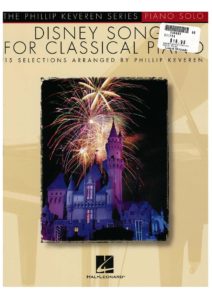 |
Disney Songs For Classical Piano |
| Disney Tarzan songbook Music by Phil Collins |
 |
Tarzan (Disney) Music by Phil Collins |
| Disney The Library Of Disney Songs Piano Vocal Guitar |
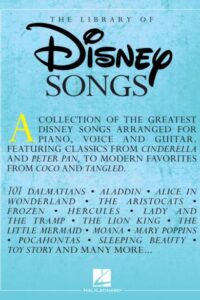 |
Disney The Library Of Disney Songs Piano Vocal Guitar Contents |
| Disney The Lion King Music From The Motion Picture Soundtrack Piano Vocal Guitar |
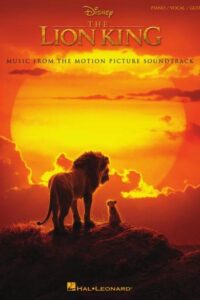 |
Disney The Lion King Music From The Motion Picture Soundtrack Piano Vocal Guitar |
| Disney The Lion King songbook |
 |
Disney The Lion King |
| Disney Up Married Life (Main Theme) Piano Solo Sheet Music Michael Giacchino |
 |
